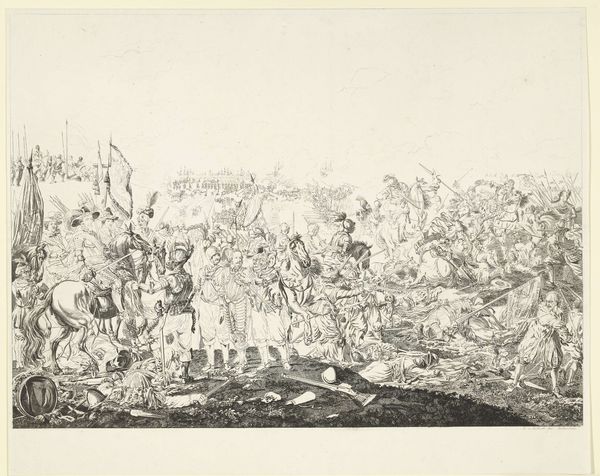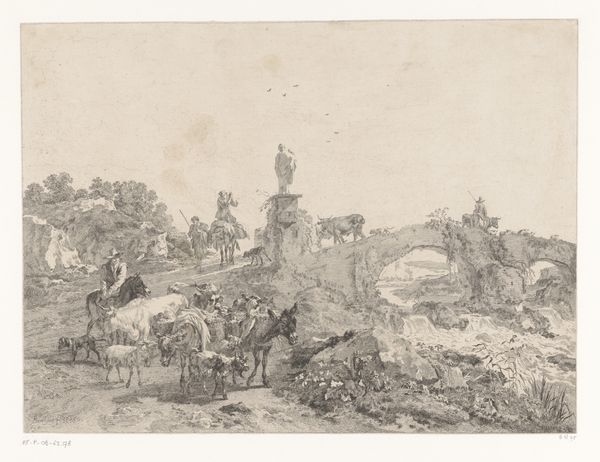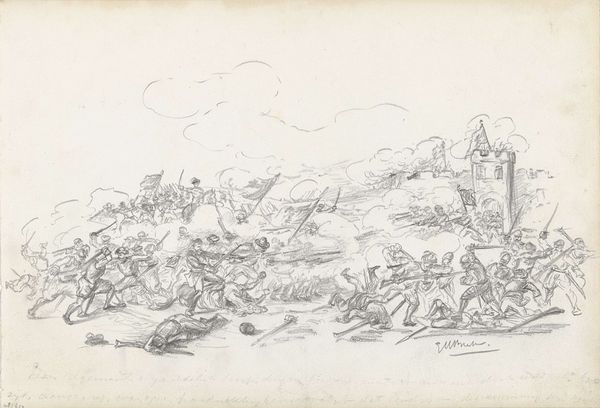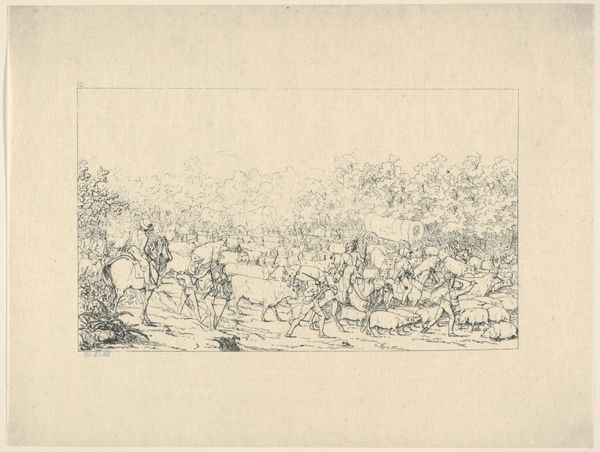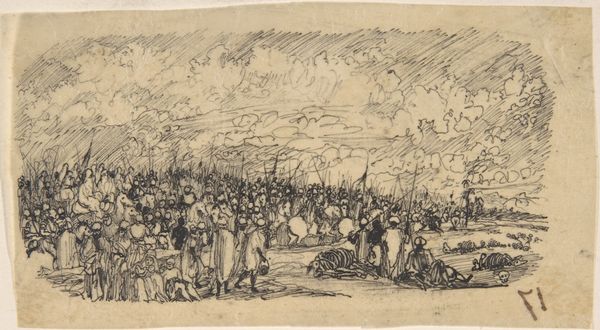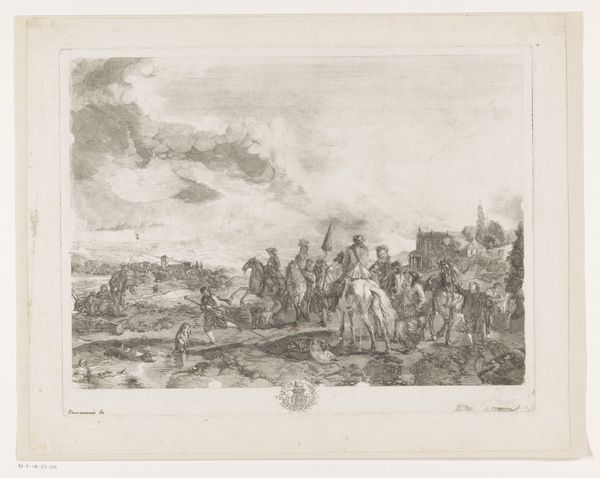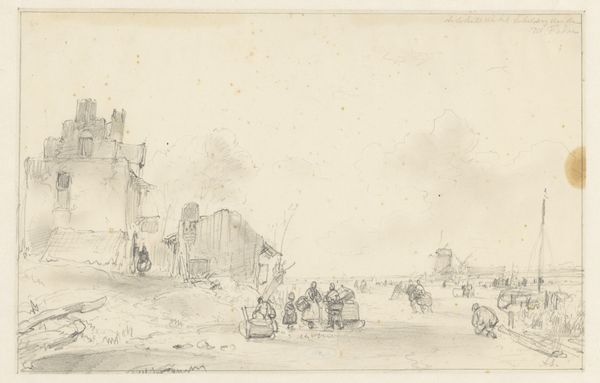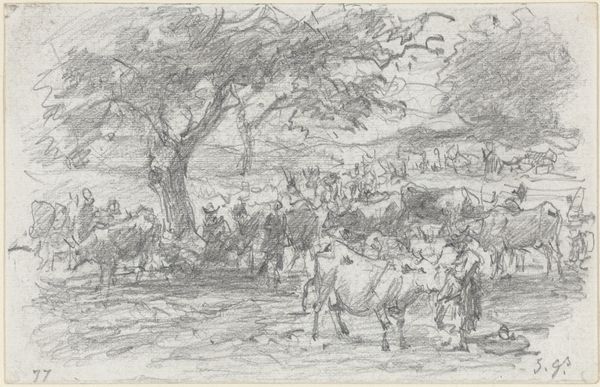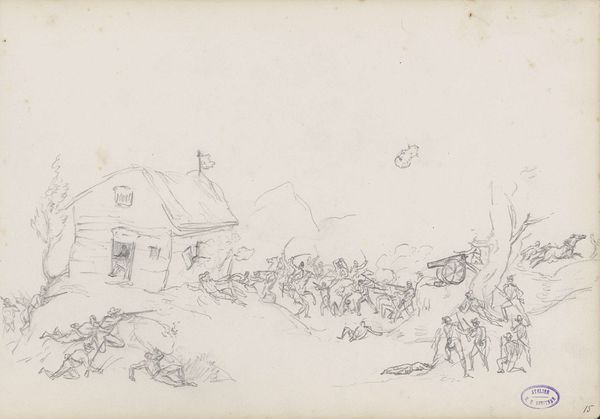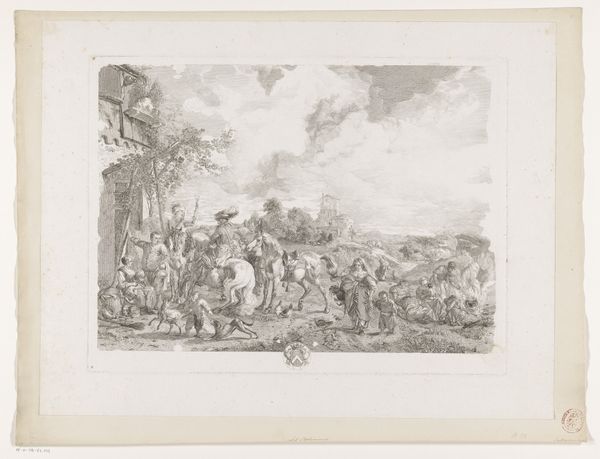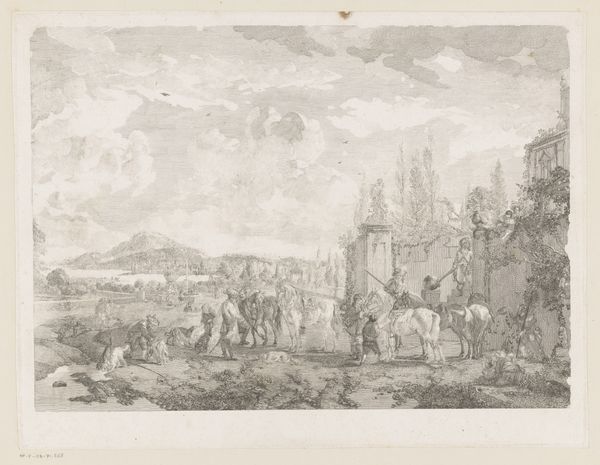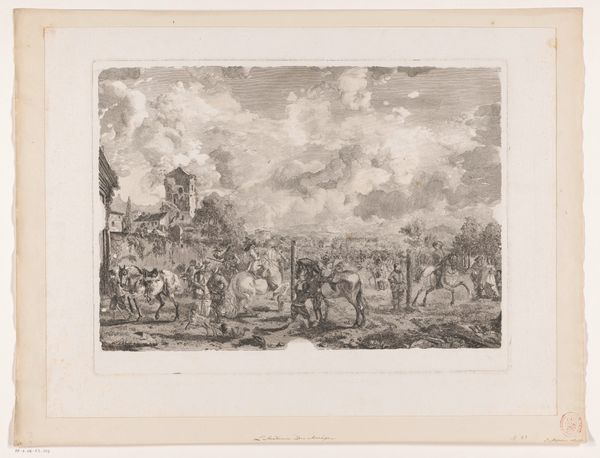
drawing, etching, paper, ink
#
drawing
#
ink drawing
#
narrative-art
#
pen illustration
#
pen sketch
#
etching
#
pencil sketch
#
landscape
#
etching
#
paper
#
ink
#
romanticism
#
history-painting
#
academic-art
Dimensions: height 370 mm, width 472 mm
Copyright: Rijks Museum: Open Domain
Editor: So, here we have Pieter Gerardus van Os’s "Slag bij Bergen, 19 september 1799", made between 1799 and 1801. It's a drawing and etching, quite detailed despite its relatively small scale. What do you see in this piece? What stories or ideas do you think it’s trying to convey? Curator: I see a carefully constructed narrative, one steeped in the visual language of conflict and its representation. Notice how the church steeple rises in the background, seemingly untouched by the turmoil below. Churches often symbolize hope or divine intervention, so its placid presence here could indicate resilience. However, there is destruction all around, as if the hope the steeple promises has become remote. Does it echo feelings from this period? Editor: That’s a compelling reading. I was mainly focusing on the chaos, all those tiny figures locked in combat. Curator: Indeed, the chaos is central. Consider how the artist depicts the soldiers—as a churning mass, almost indistinguishable from one another. What feeling does that elicit? Is it a glorification of war or perhaps a critique of its dehumanizing effect? Look closely. Are there individual heroes, or are they merely parts of a greater machine? Editor: I hadn't really considered that dehumanizing aspect. Now that you point it out, it does feel less like a celebration and more like... a lament, perhaps? Curator: Precisely! And this touches on a deep cultural memory around warfare – the loss of individuality, the psychological toll. The way an artist chooses to depict a battle reveals much about their – and their culture's – attitude towards conflict itself. It can become a potent symbol. It reveals history, memory, and how artists play with psychological dimensions to give battles visual form. Editor: That gives me a completely different way of seeing it. The artist’s choices become so much more meaningful. Curator: Exactly. These symbols often accumulate layers of meaning over time. By recognizing them, we can delve deeper into a work’s cultural and psychological impact. Editor: Thanks for sharing your knowledge with me. I am beginning to see and interpret imagery in art differently.
Comments
No comments
Be the first to comment and join the conversation on the ultimate creative platform.
